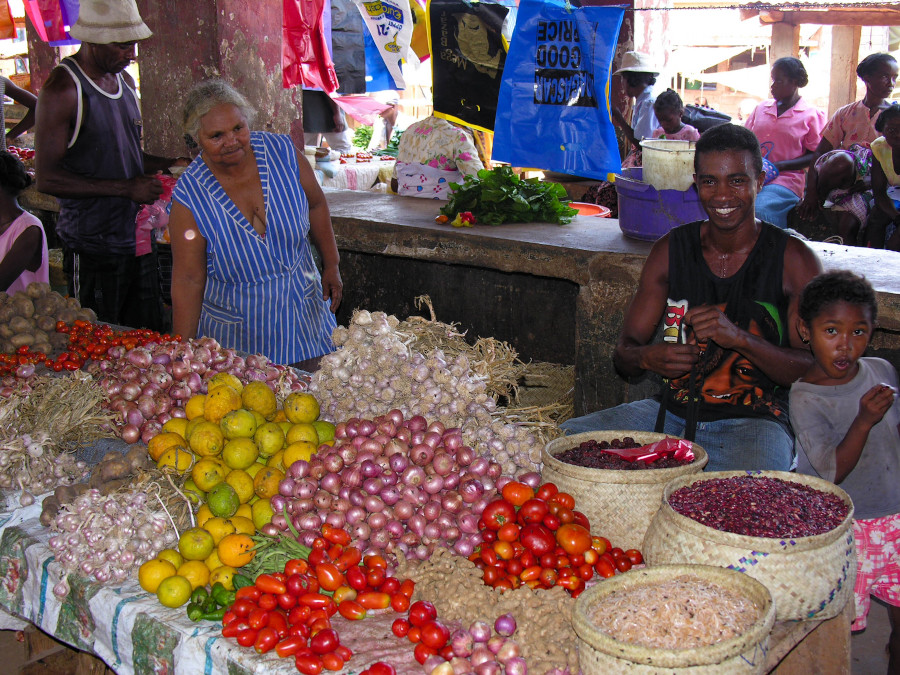- INTRODUCTION
- MALAGASY CULTURE
- MALAGASY TRADITIONAL SPORT
- MALAGASY CUISINE
- BEACHES AND RIVERS
- MONEY AND CREDIT CARDS
- PURCHASE TIPS
- SITES AND ACTIVITIES
- MONUMENTS
- MALASY HANDICRAFTS
- TIPS FOR TRAVELLERS
- MADAGASCAR CONNECTING FLIGHTS
- MADAGASCAR NATIONAL PARKS AND RESERVES
- FAUNA AND FLORA OF MADAGASCAR
- PUBLIC HOLIDAYS IN MADAGASCAR
- THE SOUTH WEST AND WESTERN REGIONS
- THE SOUTH EAST REGION
- THE NORTH WEST REGION
- THE NORTH EAST AND EAST REGIONS
- THE CENTRAL HIGHLANDS
MADAGASCAR: THE SOUTH-EAST REGION
Land of contrasts, the south-east is at the conjunction of climates which granted it with very different landscapes and vegetation. Its indented coastline of exceptional beauty matches perfectly with the hinterland where the word discovery has its full meaning. It is easily understandable that for centuries this riviera has attracted visitors, somehow like the nepenthes, a very pretty lower which is unique to the region.

The towns along the coastline
Nosy Varika, starting point of sports expeditions to the falls of Sakaleona, the highest ones in Madagascar. Mananjary, at the junction of the Pangalanes Channel and the Mananjary river. Place where starts the superb excursion on the Pangalanes Channel towards Toamasina passing by Mahela, Nosy Varika, Mahanoro (after Mahanoro, drive along the beautiful road to Toamasina). Manakara, terminus of the spectacular travel by train from Fianarantsoa. Splendid lavish region with exotic plants and fruits, very pleasant trip on the Pangalanes Channel lined with villages of crayfish fishermen. Vohipeno, cultural capital of the antemoro land, where the arabico-malagasy manuscripts called Sorabe are kept, and a key centre of divinatory science. Farafangana, rich in agricultural product is the motherland of the Antefasy people. Starting point for the reserve of Manombo. Vangaindrano, an Antesaka town, at the southern edge of the 400 km of coastline of the province of Fianarantsoa, a starting point for the Lake Masianaka which is sacred for the Antesaka. Also a starting point to the National Park of Midongy du sud. for those with an adventurous spirit, going back to Taolagnaro by bicycle or moto across a wonderful region is an adventure in itself.
Taolagnaro (Fort-Dauphin)
Located in the far south end of Madagascar’s eastern coastline which is amazingly straight. Town founded in 1643 and named after the future louis XiV. At the bottom of Saint Louis peak, the urban area between two bays is one of the most beautiful in Madagascar. The first people who settled in La Reunion in 1674 come from this area. It is also the capital of crayfish celebrated in an annual festival which has become a traditional event.
The surroundings
The reserve of Nahampoana, 7 km to the north, rich in endemic species. Possibility of very “amazonian” trekking and descent by canoe into the mangroves. 5 km from the airport, Vinanibe and its recreational water centre (windsurf, flysurf..). The fort of the portuguese (16th century), the oldest permanent construction of Madagascar. The bay of Lokaro is about 40 km in the north; it is ideal for enjoying the pleasures of the sea with its islets, creeks, river arms, the lake Ambarano and the village of fishermen, Evatra. Sainte Luce, about 60 km from Taolagnaro, with splendid beaches lined with luxuriant vegetation. And all along the road and trails, the funeral Art of the Antandroy and Antanosy.
From Fort-Dauphin to the southern end of the island
Huge sisal plantations along the road to Ambovombe in the valley of Mandrare. Close to the ocean, the magnificent spot of the Lake Anony; beautiful pictures of filaos and fishermen. Berenty, a private reserve over 240 ha stretching along the Mandrare river , with its famous lemurs and its Antandroy Museum for Arts and Traditions. From Tsihombe, a difficult track leading to False Cape and Sainte Marie Cape, whose tip is overhanging the ocean from a height of more than 150 m.
